This is an English translation of a book originally produced in German that looks at the evolution of express steam locomotives in Germany from around 1850 to 1960.
Published in September 2022 by Pen & Sword and written by Andreas Knipping, this hardback book is in landscape format and measures around 25.4 cm x 24.8 cm, has 176 pages and 20 mostly black-and-white illustrations. It has a published price of £35, although at the time of writing Pen & Sword has it available for £26.25 and it can be obtained online from Amazon for £24.64.
For the purposes of this book, the author uses large driving wheels as his criterion for express steam locomotives. On that basis, the book features a large number of classes that eventually totalled 6,000 locomotives.
With five chapters the book describes the oldest, the 1A1 and the Crampton; the largest, the Prussian S3; the fastest, the Reichsbahn-05; arguably the most successful, the Bavarian S3/6; and the most powerful, the Bundesbahn’s oil-fired three-cylinder 01.
Chapter 1 describes the move away from narrow-gauge railways, and Chapter 2 discusses the merits of the various wheel arrangements from the 2-2-2 to the 4-4-0. In Chapter 3 the author describes how three-coupled axles became the European norm, culminating in the graceful outlines of powerful Pacifics.
Chapter 4, Germany a divided country, describes East and West German express locomotives, often heavy Pacifics with huge smoke deflectors, that eventually succumbed to diesel and electric power. Chapter 5 compares East and West German’s competition to strengthen their locomotive fleets in difficult post-war conditions.
A series of maps of the united Germany are included that show the routes hauled by different classes of locomotives in 1955 and 1961. However, it looks as if these maps were originally produced in colour, with different colours used for each class’s routes. However, they have been printed in black-and-white and it is impossible to determine one route from another.
A number of Appendices provide a large amount of technical data for each class according to their origin in former regional state railways, including the year of construction, number of locomotives built, and extensive technical data.
A feature of the book is the inclusion of many photographs of very-early locomotives, such as those below which date from about 1870. Of particular interest is the inset at top-left that refers to The Archduke’s Baden State Railway being originally built to a broad gauge of 5 ft. 3 inches.
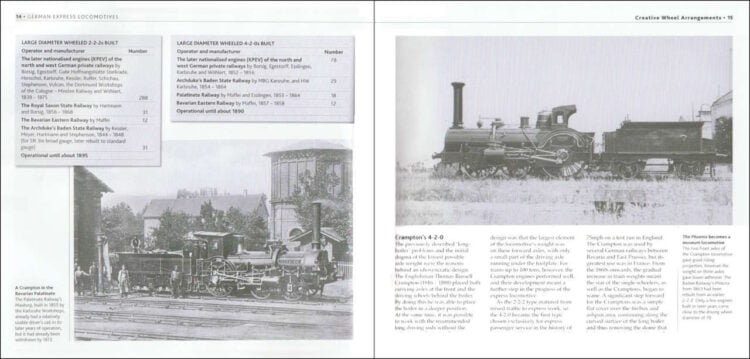
During the Soviet occupation of East Germany, its locomotives were useful assets to be used as mobile hoardings for spreading political messages, as seen on the locomotive on the right below. The table at the bottom right provides an interesting comparison of journey times between different cities before and after World War II and after the creation of East Germany.
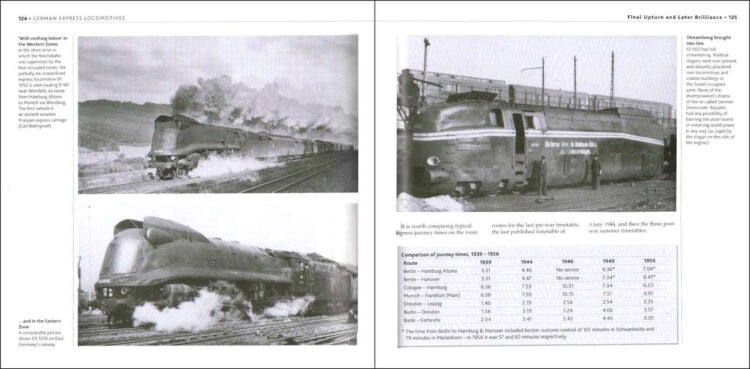
In its drive towards dieselisation and electrification, German railways retained a number of steam locomotives for use on special trains, with two such examples shown on the left below. The right-hand page is an example of the extensive narrative that accompanies the book’s illustrations.
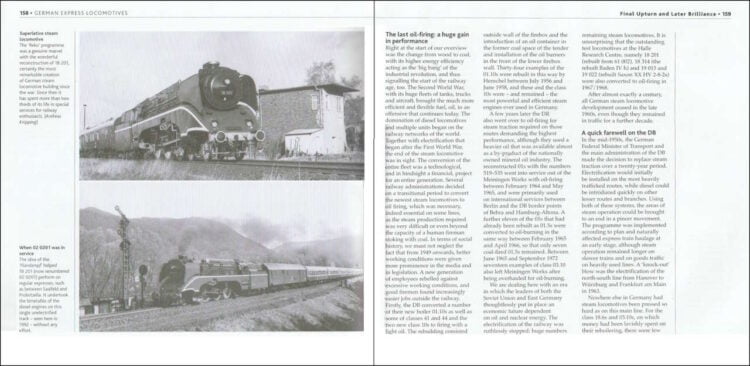
The key at the bottom of the maps below indicate that they show the routes hauled by different classes of locomotives. However, although they were undoubtedly originally produced in colour, by printing them in black-and-white it is impossible to determine one route from another.
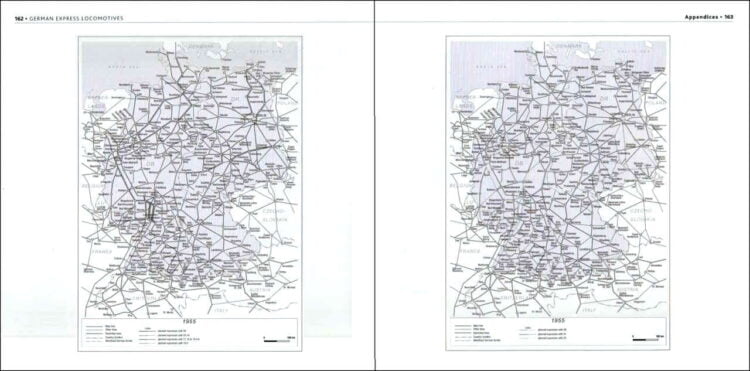
The book includes a 16-page colour section, but most of the illustrations are, as on the left below, reproductions of paintings, postcards, or postage stamps.
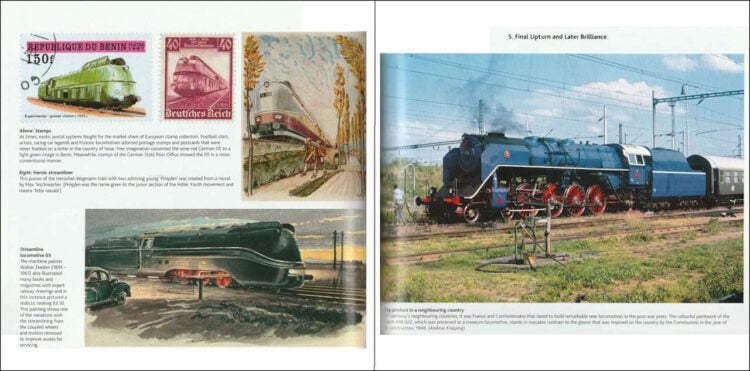
This is an English translation of a book originally published in German in 2020. The author covers the wide range of classes including 2-2-2, 4-4-0, 4-6-0 and 4-6-2 Pacifics with a wealth of photographs, illustrations, and tables giving details such as railway, manufacturer and number built.
From start to finish the author’s knowledge of the subject stands out, especially with his lengthy, detailed, and informative captions. The many illustrations are supported by a great amount of detail without being distracted by variations between individual locomotives.
Overall, an excellent well-illustrated account of the history of German steam locomotives through to the competition between the two parts of divided Germany during the Soviet occupation.
There is no hint in the text that it has been translated from German.
The author has done well to source many photographs of very-early locomotives, but the book is let down by the quality of the illustrations, as too many of them are lacking in contrast and appear as a pale grey.
Also, the maps showing the routes hauled by different classes of locomotives in 1955 and 1961 would have been far more useful if they had been printed in colour instead of black-and-white. A number of Appendices are a useful addition as they show a large amount of technical data for each class as well as the number of each class built.
The book is available to purchase from Amazon and from Pen & Sword.
We would like to thank Pen & Sword for providing RailAdvent with a copy of the book for review.



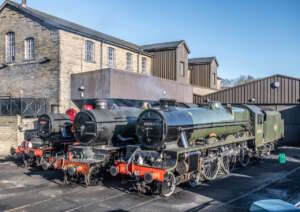


Responses